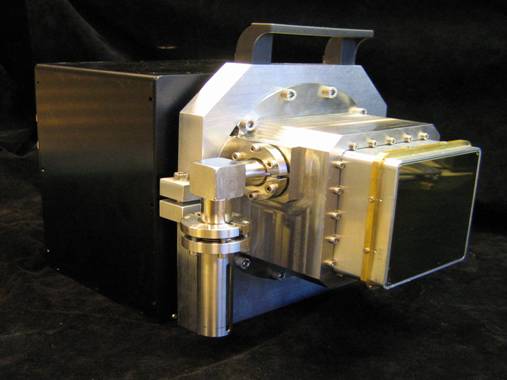Frelon camera

Introduction
The FReLoN camera is a 14 bit dynamic CCD camera, with a 2048*2048 pixel chip. This camera has been developped by the awesome people with the ‘Analog and Transient Electronic’ ESRF group.
Prerequisite
Installation & Module configuration
Follow the generic instructions in Build and Install. If using CMake directly, add the following flag:
-DLIMACAMERA_FRELON=true
For the Tango server installation, refers to PyTango Device Server.
Initialisation and Capabilities
Implementing a new plugin for new detector is driven by the LIMA framework but the developer has some freedoms to choose which standard and specific features will be made available. This section is supposed to give you the correct information regarding how the camera is exported within the LIMA framework.
Camera initialisation
The Frelon plugin provides a helper class FrelonAcq which manages the initialisation sequence with
the camera and interface object. An Espia board channel number should be set as the initialisation
parameter (default is 0).
frelon = Frelon.FrelonAcq(int(espia_dev_nb))
return frelon.getGlobalControl()
Std capabilites
This plugin has been implemented in respect of the mandatory capabilites but with limitations according due to the detector specific features and with some programmer’s choices. We do not explain here the standard Lima capabilites but you can find in this section the useful information on the Dexela specfic features.
HwDetInfo
TODO
HwSync
TODO
Optional capabilites
In addition to the standard capabilities, we make the choice to implement some optional capabilities in order to have an improved simulation.
HwShutter
TODO
HwRoi
TODO
HwBin
TODO
Configuration
The main configuration will consist in providing the correct DexelaConfig.cfg file to the detector API.
The file has to be provided by the manufacturer with a second file like sensor2923.fmt. The .fmt file contains some calibration data.
How to use
The LimaCCDs tango server provides a complete interface to the dexela plugin so feel free to test.
For a quick test one can use python, this is a short example code:
from Lima import Frelon
from lima import Core
import time
FrelonAcq = Frelon.FrelonAcq(int(espia_dev_nb))
control = FrelonAcq.getGlobalControl()
acq = control.acquisition()
# setting new file parameters and autosaving mode
saving=control.saving()
pars=saving.getParameters()
pars.directory='/tmp/'
pars.prefix='testfrelon_'
pars.suffix='.edf'
pars.fileFormat=Core.CtSaving.EDF
pars.savingMode=Core.CtSaving.AutoFrame
saving.setParameters(pars)
# now ask for 2 sec. exposure and 10 frames
acq.setAcqExpoTime(2)
acq.setNbImages(10)
acq.prepareAcq()
acq.startAcq()
# wait for last image (#9) ready
lastimg = control.getStatus().ImageCounters.LastImageReady
while lastimg !=9:
time.sleep(1)
lastimg = control.getStatus().ImageCounters.LastImageReady
# read the first image
im0 = control.ReadImage(0)